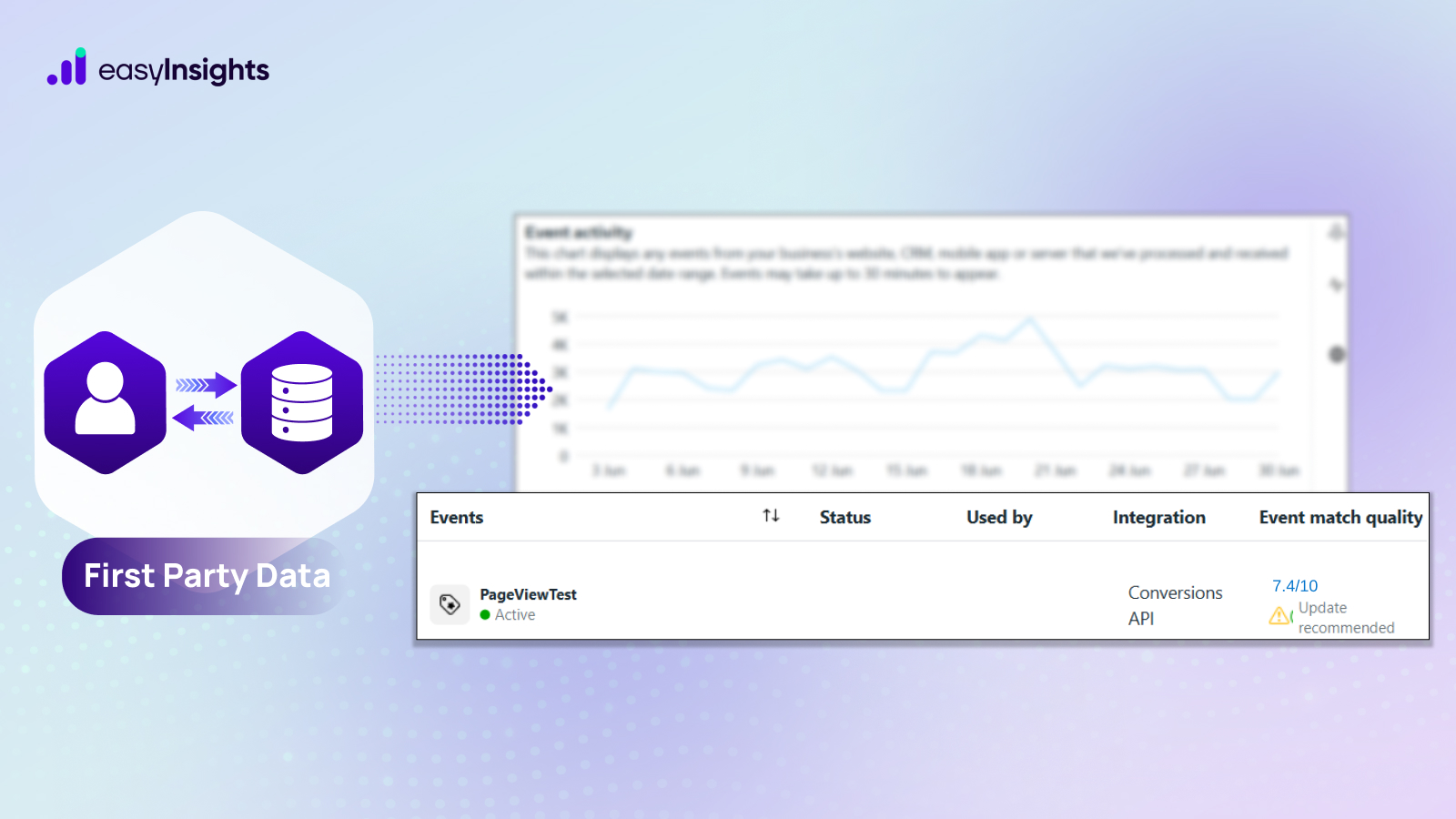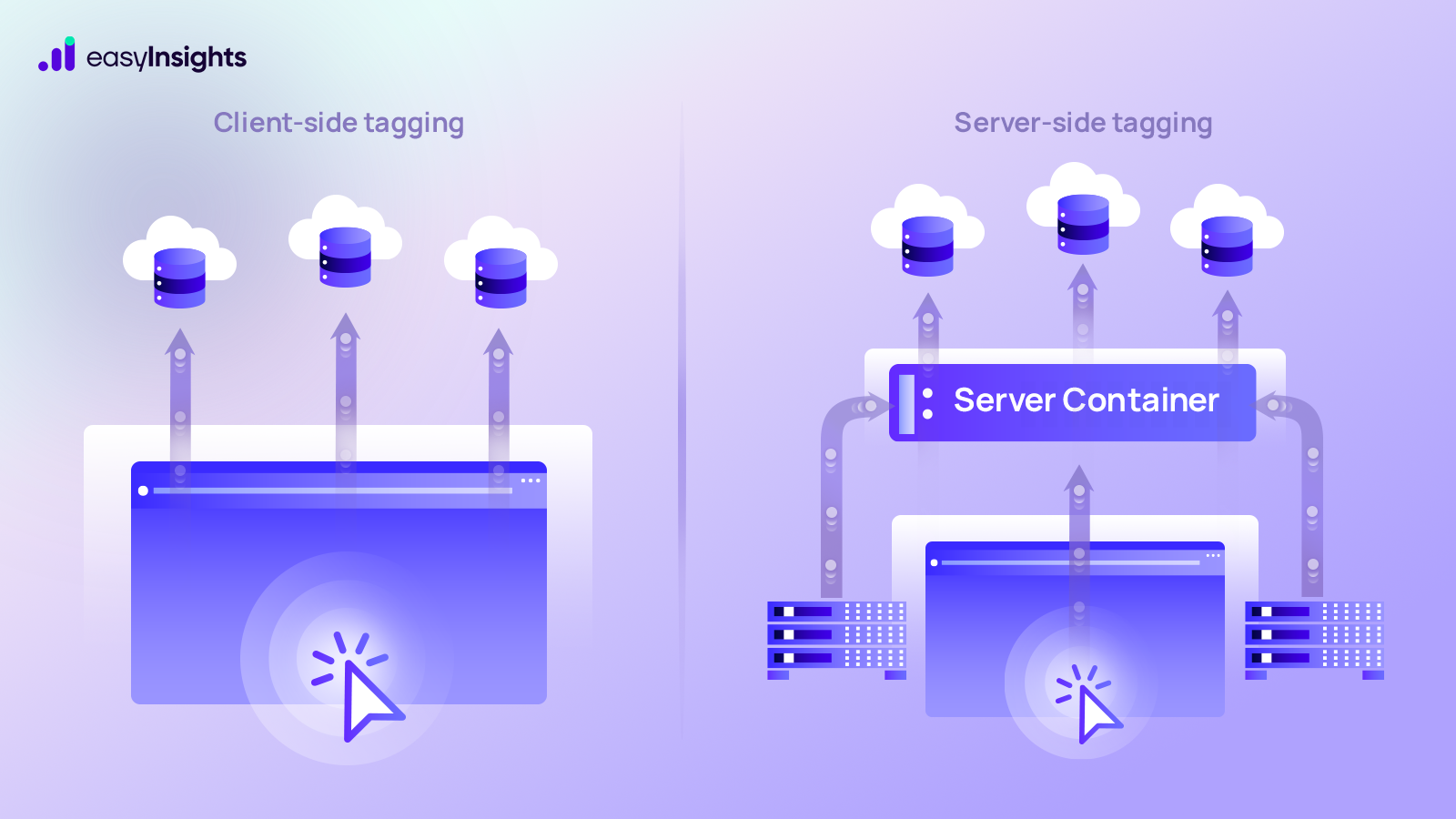
Understanding marketing data is the first step towards building innovative and powerful campaigns. As a marketer, you need to fully understand what your data is trying to tell you to create powerful stories that can engage your customers.
But how do you successfully analyze data and drive insights when all of your data is siloed across different platforms and channels? You will have access to some analytics, but they will either be incomplete, or worse, inaccurate.
The answer to this conundrum is data stitching.
Data stitching can help make sense of all the disjointed marketing data and make it easier for you to uncover deep insights about your customers. When you stitch data from different platforms or tools at the user-level, you get access to granular data which can help you understand how customers interact with your website, mobile apps, and products. This can in turn help you create more targeted campaigns and offer a better experience to your customers.
Jump ahead to:
What is data stitching?
Data stitching is the process of combining data sets from different sources and devices to get deep insights into customer behavior and journey. Data stitching gives an improved understanding of marketing campaign performance which in turn enables marketers to make real-time improvements to their campaigns and increase overall ROI.
With concrete insights, data stitching allows marketers to go far beyond their gut instincts and rough estimates, and instead take data-driven actions that are guaranteed to give better results.
But why use unique user IDs to stitch data and not any other parameter?
Because user IDs stay the same throughout the customer lifetime. It is very rare for customers to change their registered email address or phone number on a website.
With unique user IDs, you can map the in-depth customer journey and behavior even if customers use different devices/ browsers, click on multiple ad campaigns, or access your website through a different internet connection.
Why has data stitching become a necessity for marketers?
Let’s take an example of a customer who discovers your brand through a Facebook ad campaign you ran. The customer goes to your website on their laptop, browses through the different web pages, but doesn’t make a buy anything yet. The next day, they open the website on their mobile phone and finally make the purchase.
When your data isn’t stitched, these two sessions from the same user can look like two different users to you. This small error can slowly snowball and directly affect your acquisition rates, CAC, sales cycle period, and other estimates.
It will also make it difficult for you to accurately analyze your campaign performance. While you might assume your ad campaign isn’t performing well because the direct conversion rate is too low, your customers might be coming back to finish their purchases after a few days because of the campaign that they interacted with.
When data is stitched, you track the entire customer journey even if a particular user visits your website through the Facebook ad campaign but only makes a purchase days later by directly opening the website from a different device. You will still be able to recognize the customer and assign the right attribution credit to the ad campaign.
3 Powerful Use Cases of Data Stitching
1. Acquisition
Customer acquisition refers to the total number of users that you can successfully add to your customer base over a specific period. Since the goal of most businesses is to increase its customer size, this metric is extremely important to analyze whether the company is meeting its overall growth goals or not.
By stitching data together, you get all the customer touchpoints which can in turn help you calculate acquisition rates. More importantly, stitched data through unique user ID’s can also help you estimate any customer cancellation or returns, and adjust your acquisition rate accordingly.

CAC or Customer Acquisition Cost is the total marketing and sales cost that is needed to acquire a new customer over a specific period.
Additional Reading: Reducing CAC to Improve LTV:CAC Ratio
Of course, the goal is to always keep CAC as low as possible. But you can only do that when you know the exact number of customers you are acquiring from different platforms, channels, and campaigns — That is exactly where data stitching can help.
#2. LTV
Customer Lifetime Value or LTV is the total revenue generated by a customer since their first interaction with your company. LTV represents the total estimated amount of money a customer is likely to spend on your business and it is an extremely important metric because it helps you decide on reasonable customer acquisition costs.
Though LTV can be challenging to track for digital businesses that run multiple campaigns since there are so many ways for customers to land on your website and make a purchase.
Additional Reading: Calculating CLTV: Why is it an Important Metric?
Data stitching makes it possible to track and estimate LTV accurately by mapping data from social media, web analytics, and CRM.
Data stitching gives you clear details about:
- When did the customer make their first purchase?
- Which campaigns compelled them to make a purchase?
- How much money the customer spent during a specific period of time?
That means not only can you correctly estimate average LTV for your entire company and different campaigns, but you can also estimate LTV for every customer to identify your most powerful and engaged customers.

#3. Average Sales Cycle Completion Time
The sales cycle is the process that the company goes through when selling a product to customers. It is the average time between the customer’s first interaction with the company and the final purchase.
The average sales cycle for your business can depend a lot on your target audience and the kind of products that you offer. By estimating the sales cycle, you will know approximately how long it will take for a customer to make a purchase after they visit your brand’s website for the first time. You can calculate overall sales cycle of your business or channel wise sale cycle with the help of Easyinsights.ai
Additional Reading: How John Jacobs increased revenue 3x by using First-Click Attribution Model and Identifying their Av. Sales Cycle with EasyInsights.
How EasyInsights data stitching provides a holistic 360 Customer Profile
EasyInsights play a crucial role in stitching together disparate data sources to create a unified and holistic 360-degree customer profile. Here’s how they achieve this:
Data Collation:
- EasyInsights connects to various data sources where customer information resides, such as:
- CRM systems (e.g., Salesforce, HubSpot)
- Marketing automation platforms (e.g., Marketo, Pardot)
- E-commerce platforms (e.g., Shopify, Magento)
- Website analytics tools (e.g., Google Analytics)
- Social media platforms (e.g., Facebook, Twitter)
- Customer support systems (e.g., Zendesk)
- Loyalty programs, surveys, and other internal databases
- EasyInsights extracts relevant data points about each customer, including demographics, purchase history, website behavior, interactions with marketing campaigns, support tickets, and more.
Data Transformation:
- EasyInsights applies myriad filters to create audiences and custom events cleanses and standardizes the extracted data to ensure consistency across different sources. This may involve:
- creating automated audience segments that power your targeting, retargeting and remarketing campaigns with your first-party data in real-time
- creating events that power your Meta and Google Ad campaigns.
- EasyInsights also enriches the data by applying transformations like:
- Calculating customer lifetime value (CLTV)
- Segmenting customers based on behavior or demographics
- Scoring customers based on their potential value
- Creating Custom Meta Events with high Event Match Quality Scores.
Data Loading:
- EasyInsights also loads the transformed data into a central repository/CRM/CEP/Ad Platform, etc.. This creates a unified customer profile that integrates information from all sources.
Benefits of using EasyInsights for 360 customer profiles:
- Unified view of the customer: Gain a complete understanding of each customer by seeing all their interactions and attributes in one place.
- Improved personalization: Leverage the rich customer data for highly targeted marketing campaigns, content recommendations, and product suggestions.
- Enhanced customer segmentation: Create more granular and effective customer segments based on a wider range of filters.
- Data-driven decision making: Make informed decisions about marketing, sales, and customer service strategies based on accurate customer insights.
- Reduced data silos: Break down data silos and ensure all teams have access to the same customer information.
By leveraging EasyInsights effectively, you can bring together your customer data to create a unified 360-degree profile, gaining valuable insights that empower you to personalize experiences, optimize marketing campaigns, and ultimately drive business growth.
How EasyInsights Works

EasyInsights works with raw data for data activation and data enrichment in a few key ways:
Data Collection and Transformation:
- EasyInsights connect directly to your ad platform allowing it to access and extract the raw data you’ve collected.
- Data Transformation: EasyInsights then cleans, normalizes, and enriches the data to make it usable for activation purposes. This may involve tasks like:
- Formatting data: Ensuring all data points are in a consistent format.
- Handling missing values: Filling in missing data points or removing them according to your preferences.
- Enriching data: Adding additional data points from other sources to create a more comprehensive picture of your customers.
Data Activation:
- Segmentation and Targeting: It allows you to segment your audience based on various criteria like demographics, behavior, and interests using the enriched ad platform data.
- Multi-channel Marketing: You can then use these segments to activate your audience across different marketing channels like email, social media, and advertising platforms.
- Customer Relationship Management (CRM): The data can be used to personalize outreach and interactions with customers within your CRM system.
- Marketing Attribution: EasyInsights can help you understand how different marketing channels contribute to conversions and optimize your marketing spend accordingly.
Key Feature:
- Offers features like customer data platform (CDP) capabilities, marketing automation, and campaign management tools.
- Focuses on reverse ETL (extracting data from your warehouse and sending it to marketing tools) and offers pre-built integrations with various marketing platforms.
EasyInsights is a marketer’s preferred tool for first party data activation.
In this age of cross-channel marketing, EasyInsights offers a comprehensive platform to collect, store, and transform all your first-party data.
EasyInsights enhances marketing campaign efficiency in a cookieless landscape with accurate ad signals. It helps brands step away from surface-level metrics and unleash the potential of first-party data to optimize marketing strategies, ensuring a superior Return on Ad Spend (ROAS). It does all this, while being a highly affordable no-code platform with an exceptional customer support apparatus.
Sign up for a demo today to see EasyInsights in action.








